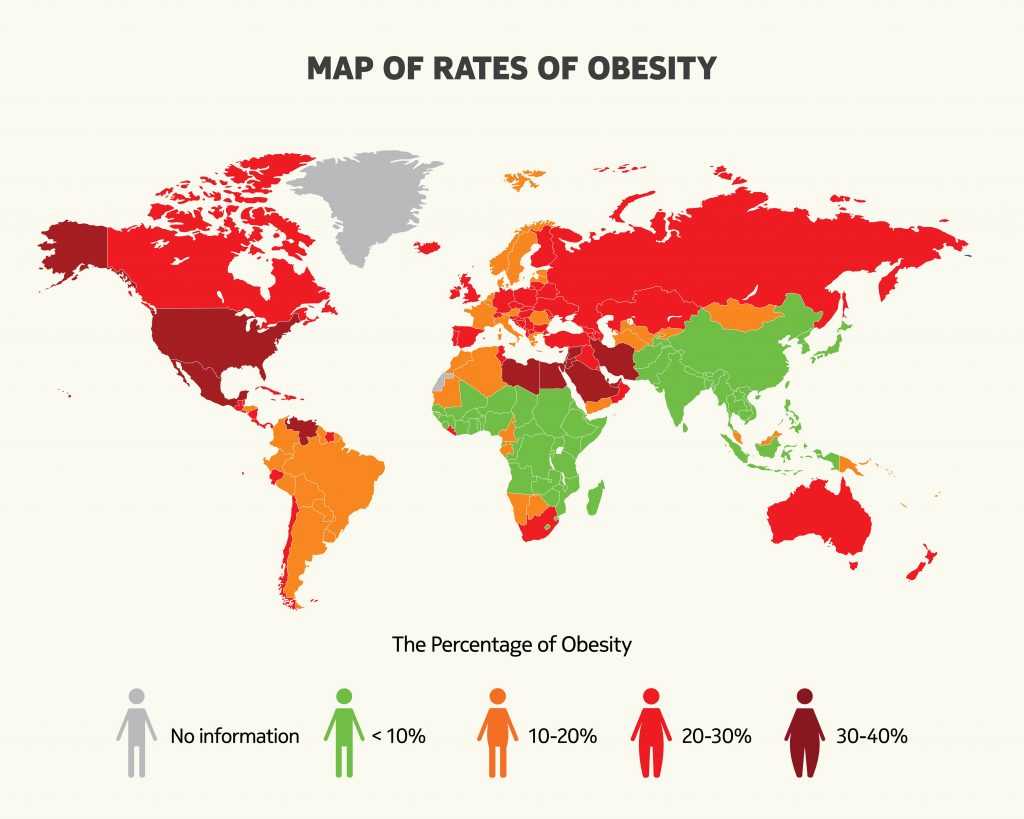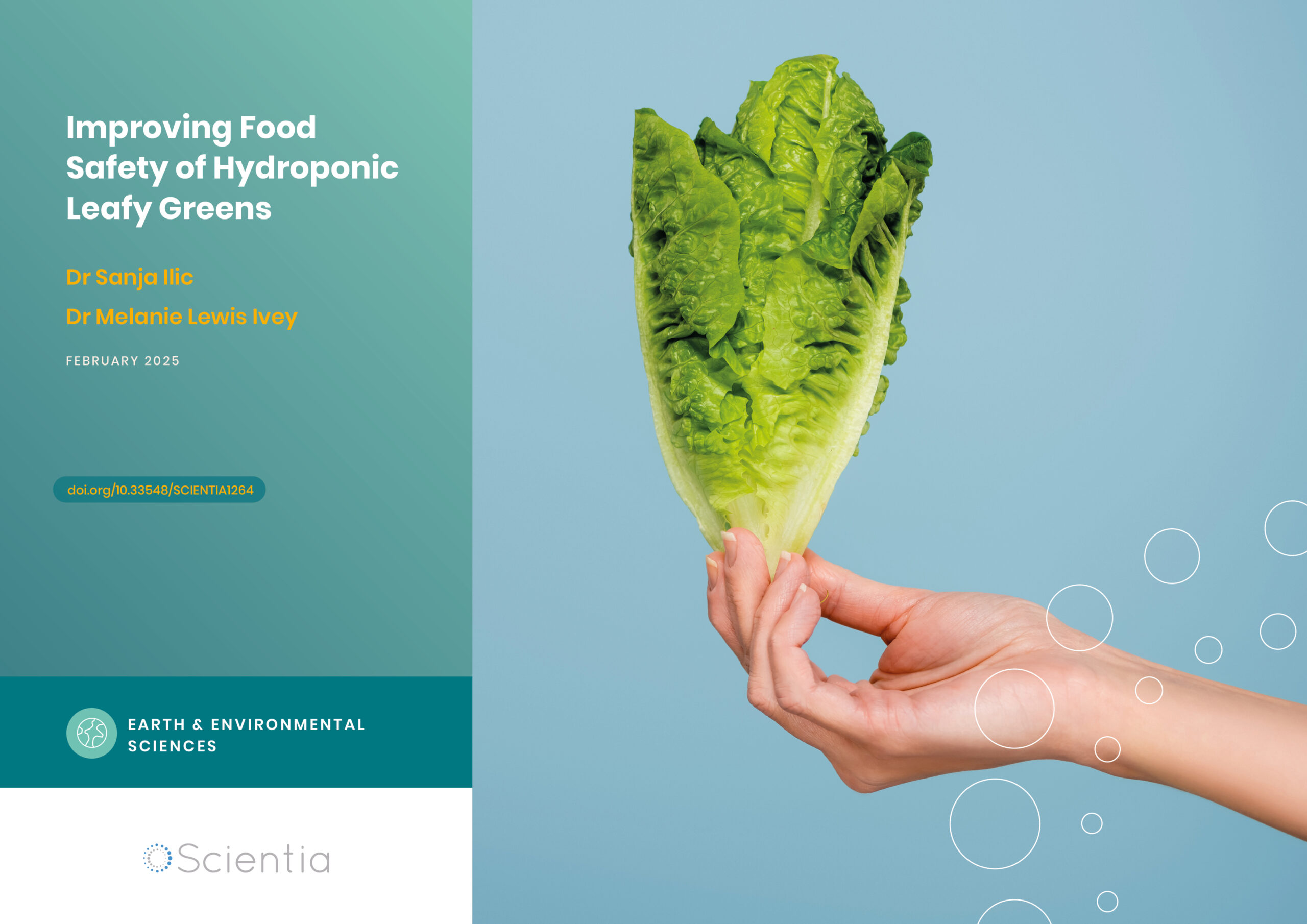Dr Jamie I. Baum – The Benefits of a High-Protein Diet Across the Lifespan
Being overweight is a well-recognised risk factor for the development of chronic diseases such as diabetes, heart diseases, and certain types of cancer. As such, obesity represents a significant public health issue worldwide. It is the leading cause of death in the USA, notably in Arkansas, where Dr Jamie I. Baum, at the Department of Food Science at the University of Arkansas, is exploring, with her colleagues, the relationship between dietary protein intake and its impact on body composition and metabolism to develop efficient nutritional guidelines to prevent and treat obesity.
Obesity and Energy Expenditure
Obesity is a complex health issue resulting from a combination of different factors including genetics, behaviour, environmental and social influences. Although multifactorial, healthcare workers agree that obesity is often attributable to an imbalance between a person’s daily energy intake and energy expenditure (EE). In other words, obesity results from too many calories being ingested versus the number of calories burned. The daily energy expenditure includes the resting metabolic rate (RMR), the energy spent during physical activity and the thermic effect of food (TEF). The RMR is the energy spent to cover our basic needs such as breathing and varies between each individual. The TEF is the energy required to digest, absorb and dispose of the nutrients and varies with the type of food ingested. For example, proteins (such as meat, fish and eggs) require more energy to be processed compared to carbohydrates (such as sweets and potatoes).

The Effect of a Protein-Rich Breakfast in Children
In the USA, about one-third of children aged between 2 and 19 years old is overweight or obese. The rise of obesity can be attributed to a lack of physical activity as well as poor nutritional education and habits. However, recent studies demonstrate that EE, RMR and TMF are also predictors of weight gain. Although this is well established in adults, there is a paucity of data in school-aged children. Dr Jamie I. Baum, at the University of Arkansas, is driving forward strategies to increase EE, RMR and TEF in normal-weight (NW) and overweight (OW) children as part of an effective, long-term, dietary intervention to tackle child obesity.
The challenge with childhood obesity comes from the necessity to built interventions easy to follow and effective in the long term. Dr Baum and her colleagues are observing the effects of increasing protein intake during breakfast in overweight and obese children. Their innovative study builds upon the simple idea that altering macronutrient proportions in children’s diet improves body composition, possibly through the regulation of metabolism and appetite. Using cutting-edge methods such as dual-energy x-ray absorptiometry (DEXA) and stable isotope methodology, Dr Baum’s team can study changes in body composition (for example the proportion of fat and fat-free mass) and whole-body protein turnover. Protein turnover represents the balance between protein synthesis and protein degradation and is an important parameter of a healthy metabolism.
The preliminary results observed by Dr Baum and her colleagues are consistent with previous pilot studies conducted at the Center for Human Nutrition at the University of Arkansas, indicating that increasing protein intake at breakfast had positive effects on NW and OW children by increasing TEF, fat oxidation and decreasing appetite. Furthermore, increased dietary protein intake at breakfast was also shown to increase the proportion of fat-free mass in NW and OW children after 6 weeks of intervention. This long term, scalable study has the potential to change children’s breakfast habits, reduce and prevent obesity, and ultimately, change the dogma related to child nutrition.

The Primary Role of Fat-Free Mass in Regulating Adult Obesity
This is all the more important as new evidence demonstrates that fat-free mass plays a role in regulating the appetite, possibly by an ‘energy-sensing mechanism’ translating the energy requires by the fat-free mass into energy intake. The exact mechanisms about how the body’s energy needs are sensed and translated into eating behaviour are still unknown, but a plausible explanation is that fat-free mass is associated with brain regions regulating appetite whereas fat mass is not.
Skeletal muscle (muscles connected to the bones such as biceps, triceps, and so on) represents a large proportion of fat-free mass and plays a central metabolic role, notably in the whole-body protein turnover. They largely contribute to the RMR, which means the more skeletal muscles we have, the more energy we will burn at rest. Anterior studies have demonstrated that altered skeletal muscle metabolism is associated with increased risk of chronic diseases such as obesity, type 2 diabetes, and also cardiovascular diseases.
Protein synthesis is a biochemical process, which consumes ATP (adenosine triphosphate, the primary form of energy in the body) for each amino acid incorporated into the protein. The amount of muscle mass, therefore, determines the energy released for protein synthesis and the smallest mass change impacts the total energy expenditure.
Dr Baum and her colleagues are focusing on understanding the role of a protein-rich diet to increase skeletal muscle metabolism and increase the global energy expenditure in obese adults. Furthermore, it is thought that including specific amino acid also regulates appetite and self-selection of meals. For example, the branched-chain amino acids such as leucine, valine, and isoleucine stimulate muscle protein synthesis and promote transport of leucine to the brain. Leucine can be found in food such as meat, poultry, fish, and eggs, and is known to increase exercise performance, build muscle and increase lean body mass. It has been shown in rodents that a leucine-rich diet reduces food intake and reduces body weight.
Dr Baum and her colleagues are collecting data to determine the effect of protein and branched-chain amino acids rich diets in obese and overweight adults to ultimately develop evidence-based nutritional recommendations to treat and/or prevent the development of obesity.

Increasing Protein Intake for Stronger Older Individuals
Sarcopenia is a condition characterised by the progressive loss of skeletal muscle mass and strength and is closely correlated with advanced age. The strong link between the length of lifespan and the loss of skeletal muscle mass and development of serious health issues such as obesity, diabetes and cardiovascular disease makes it critical to study how to improve skeletal muscle mass in the older population. Dr Baum addressed this critical issue in a review published in 2015.
Nutrition is an essential parameter of health and function in older adults. In her review, Dr Baum notes several studies highlighting the benefits of increased protein intake in maintaining a healthy energy balance, improving bone health and cardiovascular function. The current nutritional guidelines for protein intake, based on healthy college-aged men fail to address other health conditions such as injury, hospitalisation, surgery, or even simple ageing for which scientific studies recommend a higher protein intake.
Additionally, Dr Baum highlights that the quality of protein ingested is also a primary aspect for optimal health. As such, the protein characteristics, the food matrix in which the protein is ingested, and one’s individual metabolism are three important aspects that are largely under-estimated in nutritional studies and associated guidelines. To illustrate this, several studies demonstrated, for example, that ‘ingestion of milk proteins stimulates muscle protein synthesis to a greater extent after resistance exercise compared to ingestion of soy protein’ and that animal proteins were significantly better preserving lean body mass than plant proteins.
There is an abundance of studies demonstrating the beneficial effects of a higher protein intake than the current recommendation. Dr Baum gathered scientific evidence to stress the need to revise the recommended dietary allowance of protein intake to achieve optimal protein utilisation. It remains of concern that older individuals suffering from chronic diseases may follow misleading recommendations and fail to ingest adequate protein levels.

New Nutritional Strategies Based on Solid Data
Together with her team, Dr Baum is implementing new strategies to prevent and treat obesity in children and adults. Although this is a well-studied field, current nutritional strategies are often inefficient or unsustainable. Dr Baum’s research is based on the beneficial effects of higher protein intake at breakfast for children and focused on specific amino acid for adults. This simple, long term approach is backed up by sufficient scientific data demonstrating the beneficial impact of a rich protein and amino acid diet to increase skeletal muscle mass, energy expenditure and regulate appetite at all stages of life to achieve better health.
Reference
https://doi.org/10.33548/SCIENTIA623
Meet the researcher

Dr Jamie I. Baum
Associate Professor
Director, Center for Human Nutrition
University of Arkansas, Department of Food Science
Fayetteville, AR
USA
Dr Jamie I. Baum completed her BS in Dietetics at Urbana-Champaign, University of Illinois, where she later graduated in 2004 with a PhD in Nutritional Sciences. This was followed by a postdoctoral fellowship in Cellular and Molecular Physiology at Pennsylvania State University College of Medicine in Hershey. In 2007, Dr Baum relocated to the Netherlands where she was a research scientist both at Unilever Food & Health Research Institute and Danone Baby Nutrition. In 2011, Dr Baum moved back to the USA, to be part of the Department of Food Science at the University of Arkansas, where she is an Associate Professor with tenure. Dr Baum is also the Director of the Center for Human Nutrition. Dr Baum’s research focuses on understanding the effects of a dietary protein on metabolism, body composition and energy balance in children, adults and older individuals to prevent the development of chronic conditions such as obesity and sarcopenia. Dr Baum’s innovative and important work has resulted in her being the recipient of several awards and honours in the field of nutrition.
CONTACT
E: baum@uark.edu
W: https://food-science.uark.edu/directory/index/uid/baum/name/Jamie-Baum/
FUNDING
Arkansas Biosciences Institute
National Cattlemen’s Beef Association
National Institutes of Health – COBRE grant
American Egg Board/Egg Nutrition Center
Alliance for Potato Research and Education
FURTHER READING
JI Baum, RR Wolfe, The link between dietary protein intake, skeletal muscle function and health in older adults, Healthcare (Basel), 2015, 3(3), 529–543.

Want to republish our articles?
We encourage all formats of sharing and republishing of our articles. Whether you want to host on your website, publication or blog, we welcome this. Find out more
Creative Commons Licence
(CC BY 4.0)
This work is licensed under a Creative Commons Attribution 4.0 International License. 
What does this mean?
Share: You can copy and redistribute the material in any medium or format
Adapt: You can change, and build upon the material for any purpose, even commercially.
Credit: You must give appropriate credit, provide a link to the license, and indicate if changes were made.
More articles you may like
Dr Anne Hultgren | Blinding Success: How Removing Institutional Bias Improves Research Funding
New research from the Arnold and Mabel Beckman Foundation shows that blinding grant reviewers to applicants’ institutions leads to fairer funding decisions, particularly benefiting early-career scientists from less prestigious universities. The findings demonstrate how simple changes to review processes can help combat systemic biases in research funding.
Improving Food Safety of Hydroponic Leafy Greens
Hydroponic farming is experiencing rapid growth worldwide, offering a sustainable and efficient method of producing fresh, nutrient-rich crops. However, the unique conditions of hydroponic systems also present complex food safety challenges. Dr Sanja Ilic and Dr Melanie Lewis Ivey, researchers at The Ohio State University, are at the forefront of efforts to understand and mitigate the risks of human pathogen contamination in commercial hydroponic production. Their pioneering work is providing crucial insights and practical guidance to help ensure the safety and nutritional value of hydroponically grown leafy greens.
Dr Paul Robertson | Artificial Intelligence in the Cockpit: New Systems Could Help Prevent Aviation Accidents
Despite significant advances in aviation safety over recent decades, accidents still occur that could potentially be prevented with better warning systems. Dr Paul Robertson of Dynamic Object Language Labs, Inc. (DOLL) is leading groundbreaking research into how artificial intelligence could help pilots avoid dangerous situations. His team’s work reveals promising developments and important cautions about implementing AI in aircraft cockpits, with implications for the future of aviation safety.
Dr Yasjka Meijer | Monitoring Greenhouse Gas Emissions from Space: The Copernicus CO2M Mission
Atmospheric concentrations of carbon dioxide (CO2) and methane (CH4) have been steadily rising due to human activities, contributing to global climate change. Dr Yasjka Meijer from the European Space Agency is responsible for the objectives and requirements of the Copernicus Anthropogenic Carbon Dioxide Monitoring (CO2M) mission – a constellation of satellites that will enable the monitoring of anthropogenic greenhouse gas emissions from space with unprecedented accuracy and detail. This groundbreaking mission aims to support international efforts to reduce emissions and combat climate change.




